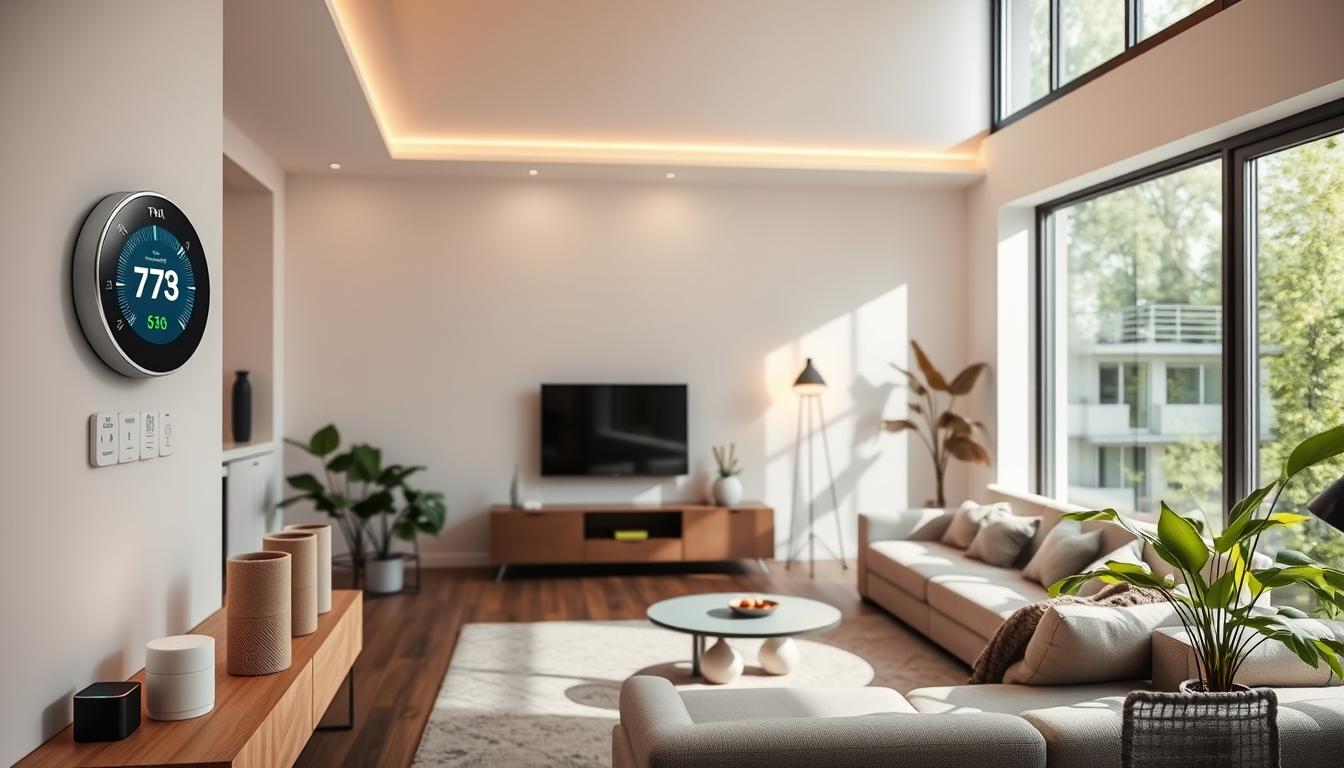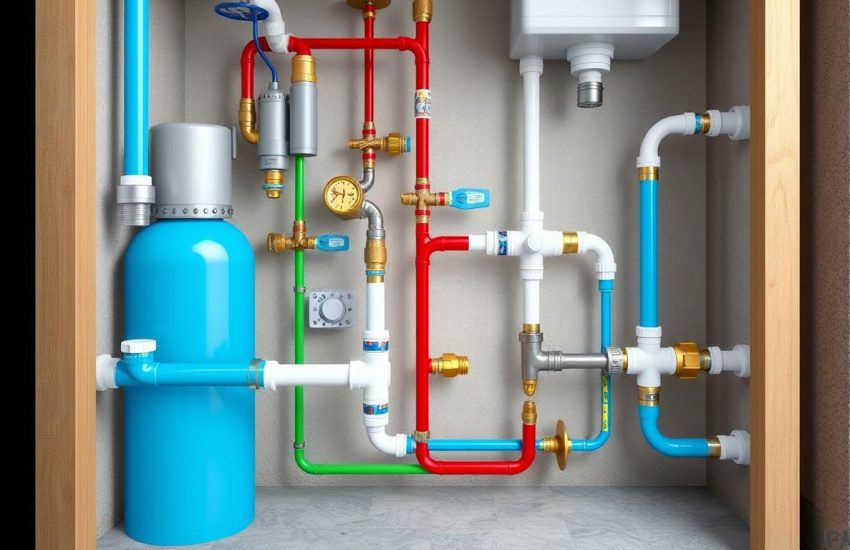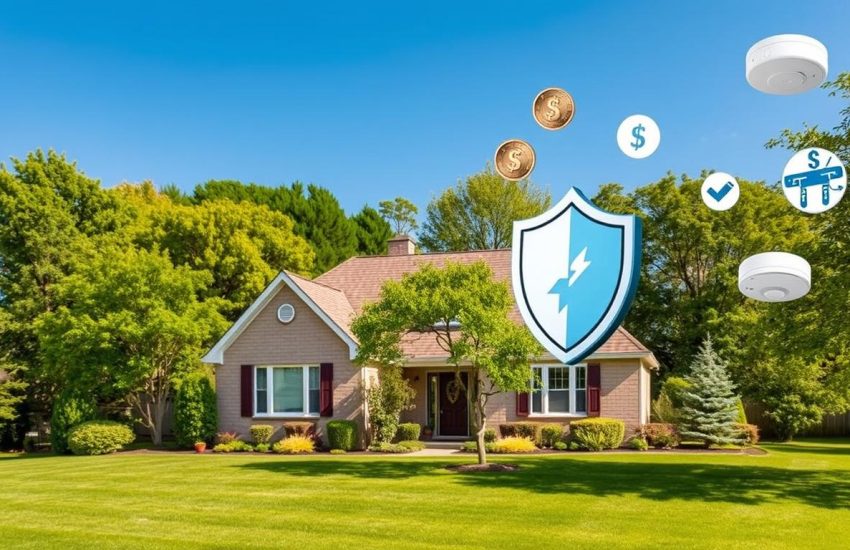Smart Home Technology: A Complete Guide for Homeowners
Have you ever thought of your home as more than just a place to live? What if it could respond to your needs? Imagine belonging to the group that wants their home to do more. The smart home technology market is growing fast. It’s changing how we think about our homes. Soon, 43 percent of homeowners will have smart devices. The market’s worth will jump to over $135 billion. This shows that smart homes are becoming a need, not just a want.
Smart home devices are not just a passing trend. They are changing how we live at home. The market has grown to $127 billion. Now, 300 million homes worldwide are smart homes. By 2025, this could increase to 481.9 million. This growth changes how we see our homes. It makes life easier, safer, and saves energy by using technology well.
Key Takeaways
- Understanding the significant growth and potential of the smart home technology market is essential for modern homeowners.
- Consumer trends indicate a high demand for interconnected, efficient smart home devices.
- Approximately half of all homeowners are anticipated to adopt multiple smart technologies in the near future.
- Smart devices have transformed from niche to necessary, with rapid adoption and an expected market value spike.
- Home automation and smart home devices bring convenience, security, and energy savings, along with privacy and liability considerations.
Why Focus on Smart Home Technology?
The prevalence of smart home tech is on the rise. It brings convenience, security, and savings. Now, managing your home’s systems like lighting or security is easy from any smartphone. This has moved from being a luxury to a must-have. The growth in smart home tech shows more homes will have it soon.
Smart home technology not only simplifies management of daily tasks but also enhances the security of personal data and property, making it an essential upgrade for modern living.
Why do people want smart home technology? It makes life easier. You can adjust your home’s temperature, turn off lights, or lock doors with one device. The use of Matter, supported by big companies like Amazon, Apple, and Google, makes sure devices work well together. This boosts the security and appeal of smart homes.
Many worry about how their data is handled, with 72% expressing concern. But, new tech aims to keep personal information safe. This gives users peace of mind.
Setting up a smart home can cost a lot. A fully automated home might be more than $15,000. Yet, there are cheaper options. Devices like Google Nest Mini and Amazon Smart Plug make smart tech easy to have for less than $100. This shows smart technology is within reach for many.
- Convenience of managing home devices remotely.
- Increased security with modern technology.
- Energy and cost savings from efficient appliance management.
- Market competitive pricing due to continued innovation.
| Feature | Cost | Range (Meters) |
|---|---|---|
| Zigbee | Varies with device | 10 |
| Z-Wave | Varies with device | 30 |
| Luxury Home Automation | Over $100,000 | N/A |
| DIY Smart Devices (e.g., Amazon Smart Plug) | Under $100 | N/A |
As the forecast shows, smart home tech will become more common. The move towards DIY smart home technology lets owners customize their homes. This means people can set up their living spaces just how they want.
DIY vs Professional Help
Exploring smart home technology leaves homeowners choosing between DIY installations and professional help. Knowing the good and bad of each way really matters. It affects how well your smart devices work and fit into your home.
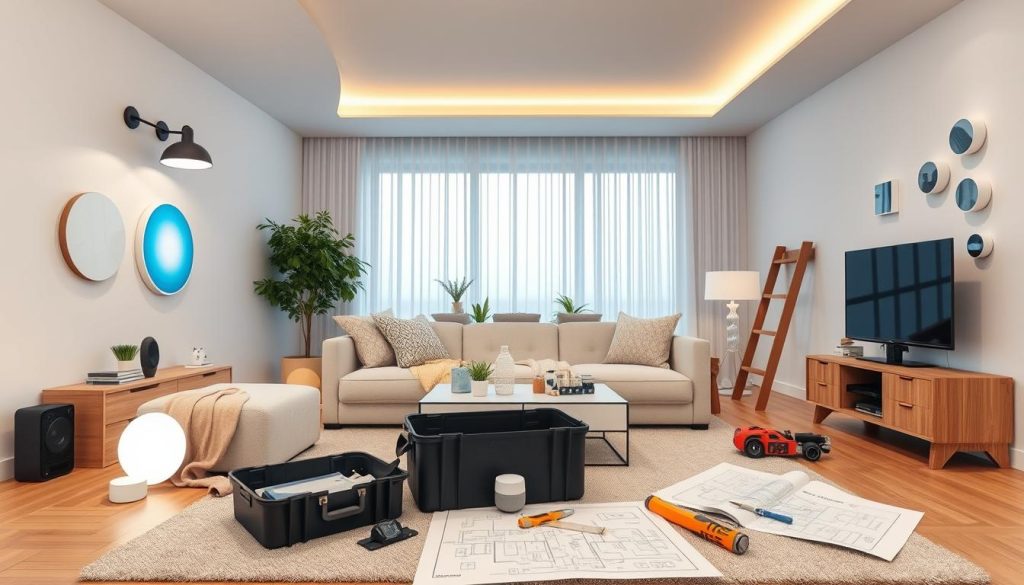
Choosing DIY means going the cheaper route. There are many kits and devices out there for this. These products work well with Alexa, Google Assistant, and HomeKit. The Google Home Mini, under $25, is a budget-friendly start. DIY lets you make it your own, working within your time and money limits.
| Installation Type | Cost | User Involvement | Typical Experience |
|---|---|---|---|
| DIY | Lower upfront costs | High (Complete control) | Time-intensive, potentially frustrating |
| Professional | Higher upfront costs | Low (Minimal effort) | Quick, efficient, and optimized setup |
But, DIY can be hard if you’re not into tech. A study showed over one in three adults struggle setting things up. This leads to stress and returns. Problems, like missing a C-wire for smart thermostats, can stop you needing more electrical know-how.
Going with professional installation means getting expert help. Companies like Best Buy and Amazon Smart Home Services start at $100 for this service. Their experts, from places like Goodman Networks, are skilled and checked. They ensure a smooth setup which saves time and cuts mistakes. Pros can link up many devices easily, even with systems like Control4 Smart Home OS.
Think about how this affects your home over time. DIY saves money at first. But, pros offer better connection and trustworthiness. This can attract buyers later.
Choosing DIY or pros depends on what you like, your budget, and your smart home needs. Thinking about these points helps you decide the right way to add affordable smart home technology to your home.
How to Save Money
Smart home technology is not just for home upgrades and easy living. It’s also a way to save money on smart home technology. With devices that use less energy, you can lower your bills and help the planet.
One good choice is a smart thermostat. Energy Star-certified models can save up to 8% on heating and cooling. That’s about $50 per year. Pairing this with regular HVAC checks boosts savings and efficiency.
Moving to LED smart bulbs cuts power use by up to 75% compared to old bulbs. They last much longer too. Making this change can save around $225 each year. Upgrading to efficient washers and dryers can save even more, using up to 35% less water and being 60% more energy efficient.
Adding smart home systems that manage electricity can cut your bills a lot. Devices that track power use help find and stop waste. Also, many power companies give discounts for smart thermostats. Smart security can also lower insurance costs.
| Device | Annual Savings | Energy Efficiency Increase |
|---|---|---|
| Smart Thermostat | $284 | 8% |
| LED Smart Bulbs | $225 | 75% less energy |
| Smart Washing Machine | Up to 35% less water usage | 25% energy savings |
| Energy-Efficient Dryer | 60% more energy efficient | Uses heat pump technology |
New gadgets like smart leak detectors and smart watering systems stop water waste. They save a lot on water bills and avoid costly leak damages.
It’s key to make sure new tech fits with your home setup before installing. Starting small, like with one room, can keep costs down while saving money with smart home technology. Starting with steps like this can help control costs and still reach your money-saving goals.
Step-by-Step Upgrades
Turning your home into a smart hub needs a planned approach. We aim for the top smart home devices to better your life and boost house value. It makes daily life easy and smooth.
Begin with smart lighting. You can change home vibes remotely and save energy. These systems fit well with Google Home, Amazon Alexa, or Apple HomeKit. They’re not just functional but also up your home value increase chances.
Then, boost your security. Use advanced security cameras and smart locks for real-time checks and alerts. For big properties, a mesh Wi-Fi makes sure surveillance is constant.
Energy-efficient thermostats are next. They learn your schedule and temperature likes. This cuts down on heating and cooling waste. It’s all about saving energy and cutting utility bills.
For smooth operation, set up a smart home network. A special network for your devices boosts security. Good wiring and strong Wi-Fi are key for running these devices well. This makes smart home care easy.
As you add devices, check they work with what you already have. You might need Wi-Fi 6E for better speed and reliability. This ensures all devices talk well to each other.
- Start with smart lighting to set the base of your smart home.
- Integrate security cameras and smart locks for enhanced home security.
- Include an energy-efficient thermostat to manage heating and cooling efficiently.
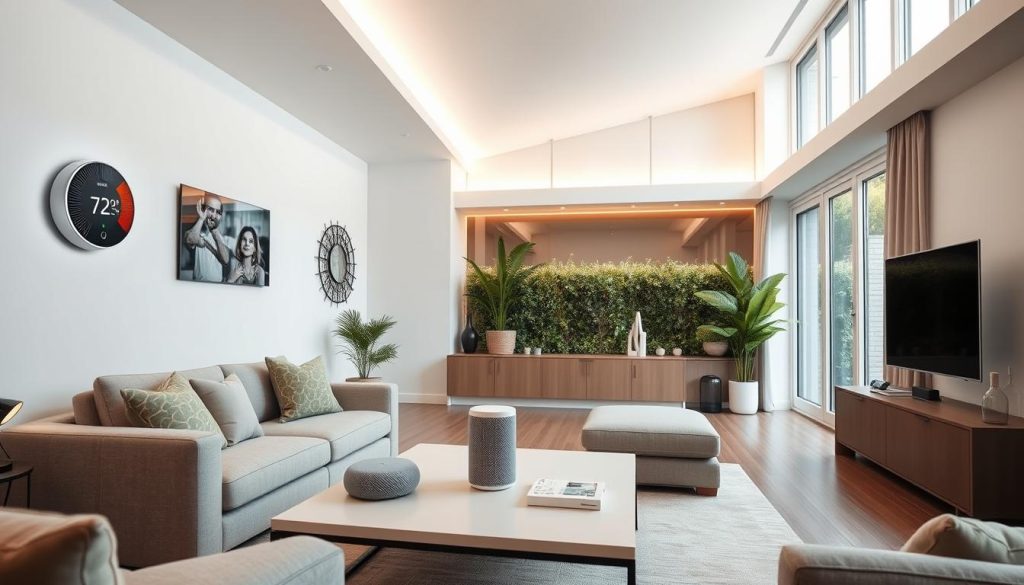
Starting a smart home can be simple. Begin with the basics and slowly add more. Each new piece adds comfort and safety. Plus, it ups your home’s value, making it a smart future choice.
Final Tips for Success
The smart home market could reach $97.61 billion by 2025. This makes the home automation trend very exciting. Focus on smart gadgets, home safety, and saving energy. These areas are big chances for the market. They also save homeowners money and make life easier. For example, smart thermostats adjust your home’s heat and save energy. Smart plugs cut down on energy use too.
A good smart home needs a strong central system. A smart hub lets you control devices easily. You can use apps to control things from anywhere. Adding voice commands with tools like Alexa makes it even better. Yet, all smart home devices must work well together. This needs the right technology that can grow with new advances.
Your smart home also needs to be safe and private. Always update your devices and use strong protection, like VPNs. Choose products that check your identity in several ways. This keeps your home safe. Many experts think partnerships are key to smart home success. Do not forget to update your internet every few years. Using strong internet security is important too. This keeps your smart home safe and ready for the future.

